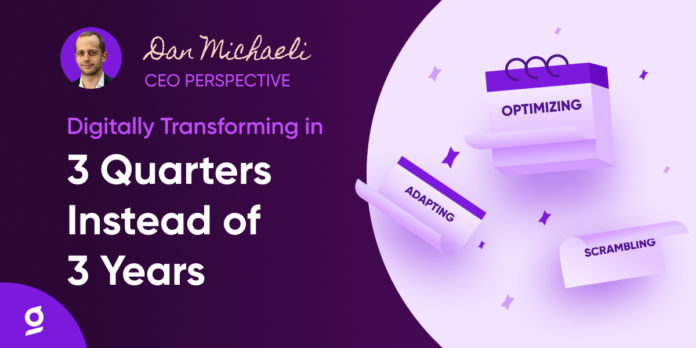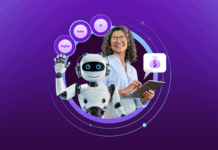Glia is fortunate to work with some of the largest and most sophisticated enterprises in the world. With this privilege, comes a high degree of complexity. Almost every single client we’ve worked with tells us, “If you think your other customers have a long IT and Security review process, wait until you see ours!” Enterprise software’s biggest competition is always this organizational inertia.
However, recent events have forced every enterprise to become as nimble as a start-up. It’s been extremely painful for most because it requires change at a blistering pace. In working with businesses of varying digital maturity, I’ve noticed that the “Digital Transformation” that was supposed to happen over 3 years now has a timeline of 3 quarters. At Glia, we are thinking of these next 3 quarters of rapid transformation in 3 phases: Scrambling, Adapting and Optimizing
Scrambling (Short Term) – In the wake of the pandemic, a series of immediate digital initiatives flooded businesses. This ranged from activating employees for remote work to spinning up new self-serve websites for end-users. The length and timing of the Scrambling phase are closely tied to geography—the timing of when the lockdowns were instituted for a particular state or city dictates if a business is still in this phase.
Adapting (Medium Term) – Most businesses have emerged from the Scrambling phase and are now amidst the Adapting phase. Teams are rethinking digital priorities for the next nine months as they power through a backlog of projects. The Adapting phase will define how a business will set itself up for a digital-first future that accounts for sudden disruption. We will all be prioritizing operational efficiency, security, and reliability over growth during this time.
Optimizing (Long Term) – The most exciting phase will occur once we emerge on the other side of the virus (for more reasons that one). Businesses will have the opportunity to build upon a hard-fought foundation that was put in place during these very challenging times. The right platforms, processes, and people will be in place to focus on renewed growth and innovation. We will be thinking about how we thrive instead of how we survive in the new normal.
In working with our clients, we are hyper-aware of which phase they are currently operating in. As a tech community, we have to listen more than ever so that we can be proactive and nimble. There is no way to change the circumstances that we find ourselves in. The only thing we can change is how we think and react to the circumstances. With this attitude, enterprises have the opportunity to emerge from this crisis stronger than before.





